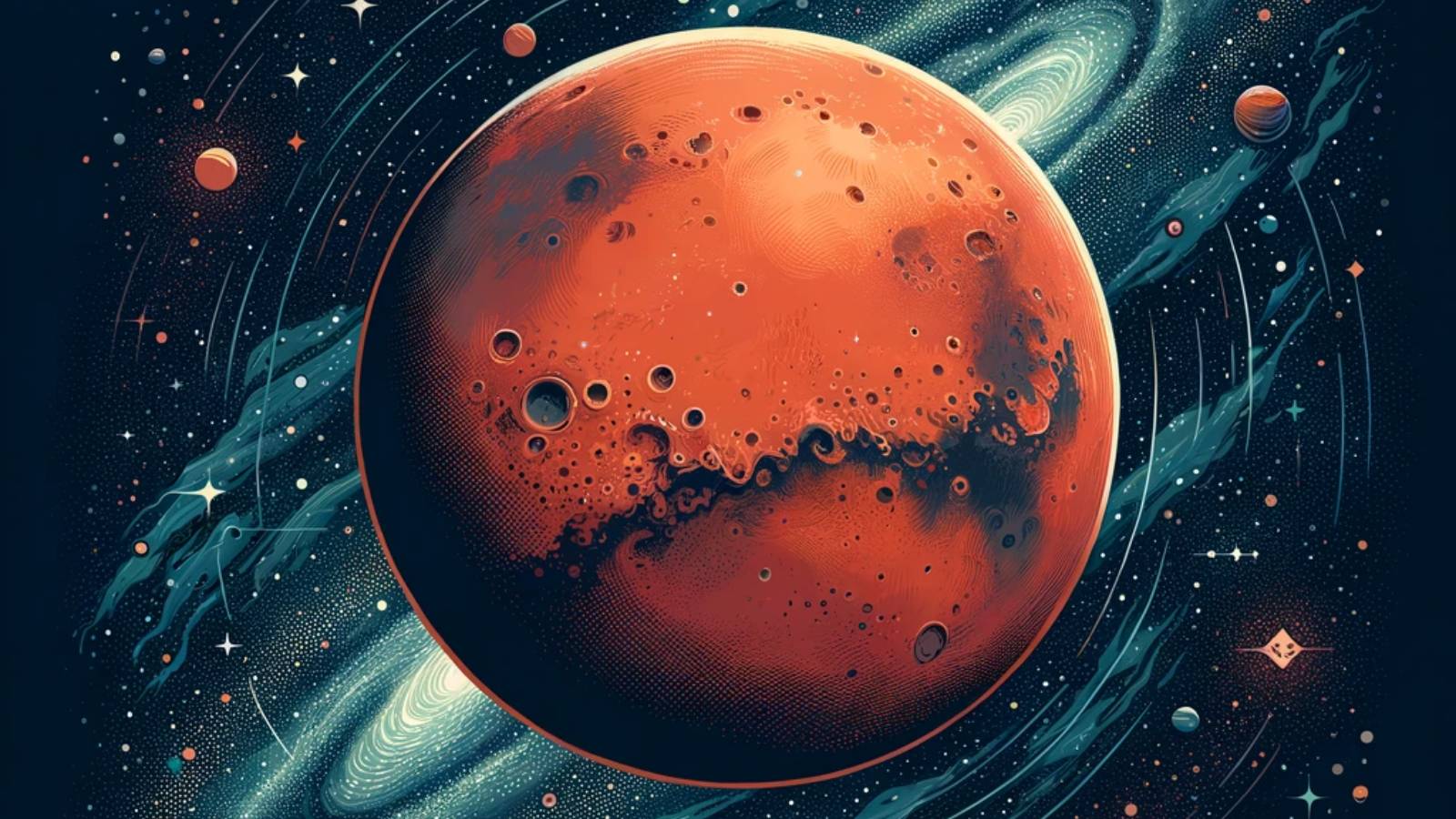Din 2012, roverul Curiosity al NASA a detectat în mod repetat metan pe Marte, în special în apropierea locului său de aterizare, în interiorul craterului Gale, un bazin vast cu o lățime de 154 de kilometri. Această descoperire, deși intrigantă, ridică și numeroase întrebări, datorită comportamentului neregulat al gazului pe Planeta Roșie.
Fenomenul metanului pe Marte este cu adevărat enigmatic. Gazul apare predominant noaptea, afișând fluctuații sezoniere și creșteri neașteptate de până la 40 de ori față de nivelurile obișnuite. Mai mult, în ciuda acestor concentrații sporadice, metanul nu este prezent în cantități semnificative în atmosfera marțiană și nu a fost detectat în alte locuri de pe suprafața Planetei Marte.
Recent, un grup de cercetători de la NASA, sub conducerea savantului planetar Alexander Pavlov, a adus o lumină asupra acestui mister. Echipa NASA sugerează că metanul de pe Marte ar putea fi prins sub o crustă de sare solidificată în regolitul de la Gale Crater. Acest regolit, încălzit în timpul zilei, ar putea slăbi crusta de sare, eliberând metanul pe timpul nopții. Interesant este că greutatea roverului Curiosity, traversând crusta, ar putea cauza fisuri prin care metanul să fie eliberat brusc.
Planeta Marte: Descoperirile NASA care au INTRIGAT Cercetatori din Toata Lumea
Aceste teorii au fost testate de cercetătorii NASA la Centrul de zbor spațial Goddard din Maryland, folosind un regolit marțian simulat, perclorat de sare—comun pe Marte—și neon ca analog pentru metan. Rezultatele experimentelor confirmă că o crustă de sare se poate forma și reține metanul sub ea în anumite condiții.
În ciuda acestor descoperiri, rămâne incert de ce metanul se formează pe Marte. Pe Terra, acest gaz este majoritar produs de organisme vii, dar până acum nu am găsit dovezi clare de viață pe Marte. Totuși, metanul poate fi generat și prin procese geologice, fără implicarea vieții.
Ashwin Vasavada, om de știință la Jet Propulsion Laboratory al NASA, a subliniat complexitatea situației: “Este o poveste cu multe răsturnări de situație. Parte din cercetarea metanului va trebui să fie preluată de viitoarele misiuni marțiene, care vor fi mai bine echipate să răspundă la aceste întrebări specifice.”
Această cercetare, publicată pe 9 martie 2024 în Journal of Geophysical Research, deschide noi perspective în înțelegerea fenomenelor de pe Marte, subliniind rolul crucial al tehnologiei și inovației în explorarea spațială a NASA. Planeta Marte continuă să fie un subiect fascinant de studiu, oferind posibilități nelimitate de descoperire în cadrul misiunilor viitoare ale NASA.






















